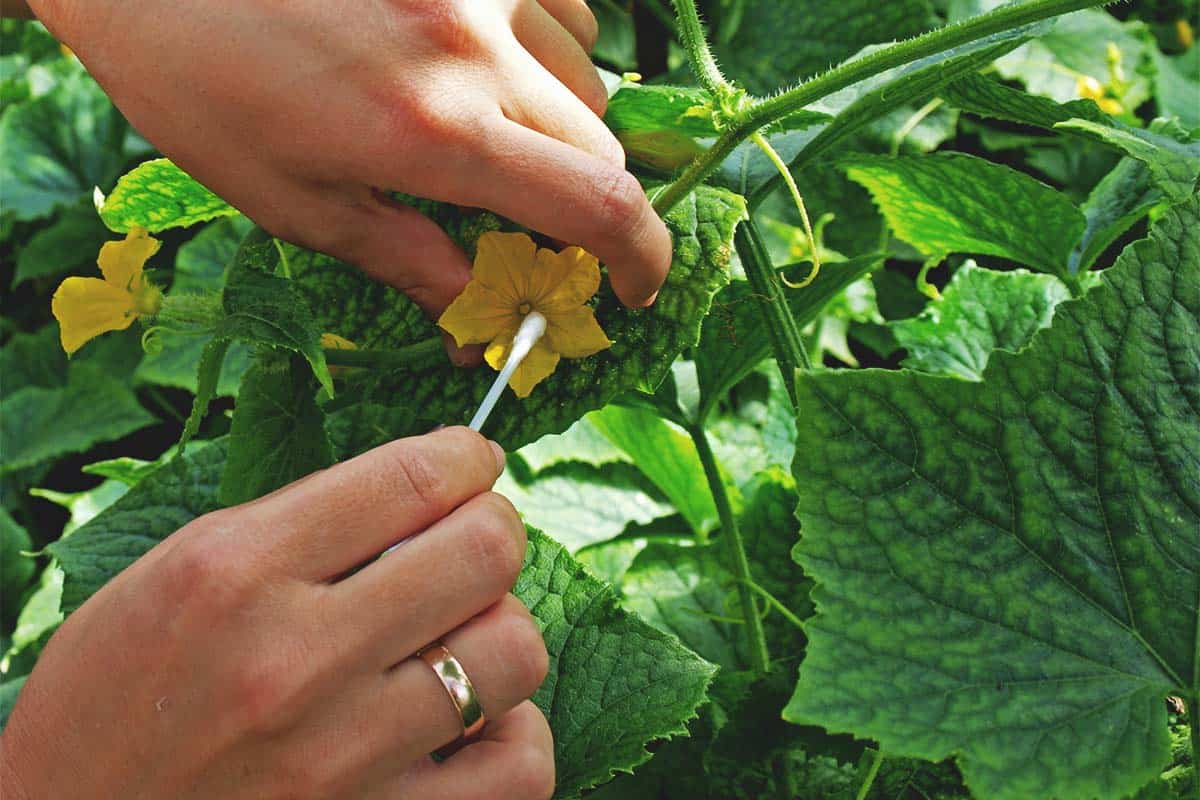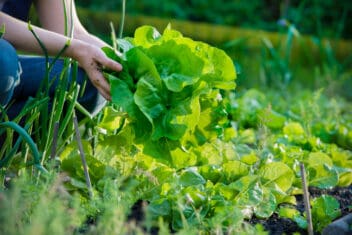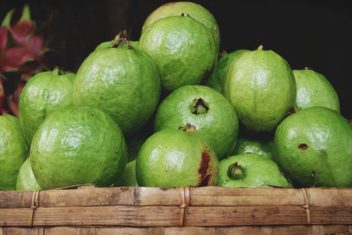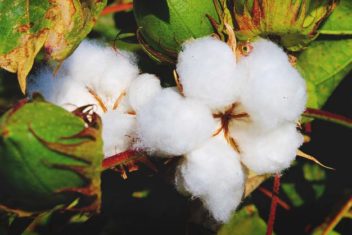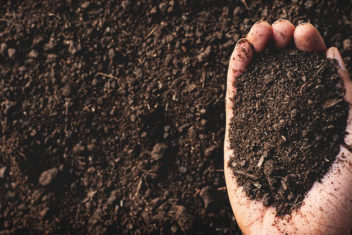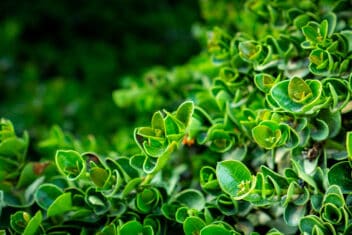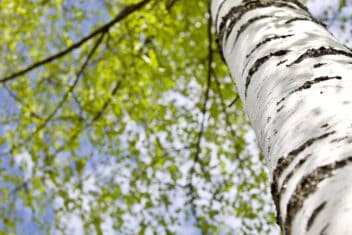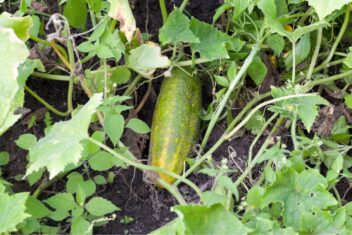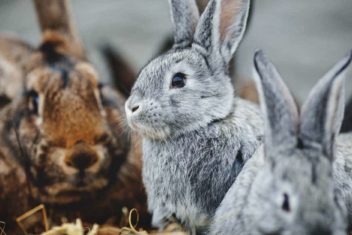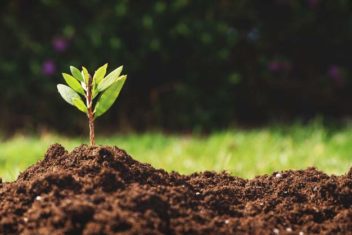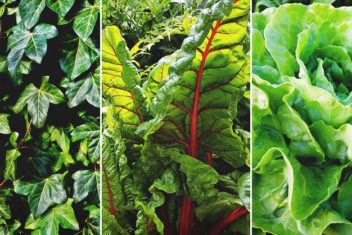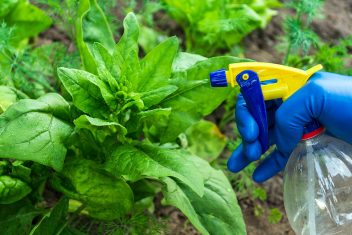Are you having trouble with your plants bearing fruit? If it seems as if the flowers bloom but then curl up and fall off of the plant, then you might have a need to learn how to hand pollinate your plants.
We all know that pollinators play a vital role in our gardens, but we rarely pay attention to them until they’re missing – or buzzing around our heads during a picnic.
But pollinators are necessary for many plants to bear fruit, and if your garden is lacking them, or if they can’t access your plants, then you’ll need to hand pollinate.
Yes, you need to learn how to play the birds and the bees in your garden!
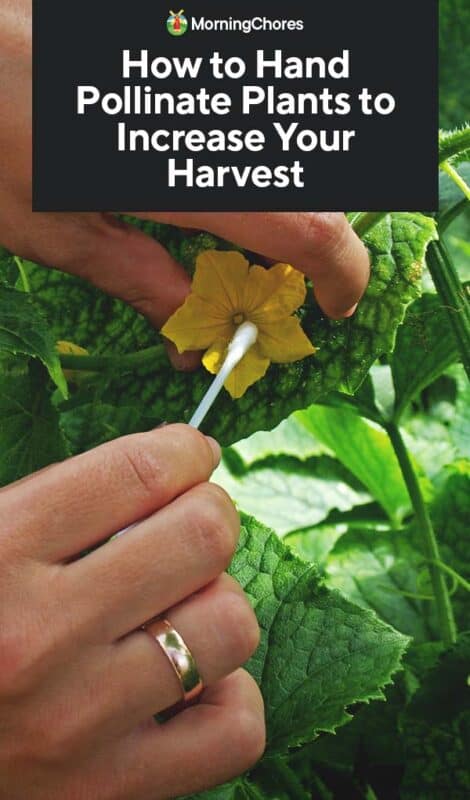
Why Do I Need to Learn How to Hand Pollinate Plants?
Hand pollinating might not be on your radar, but it’s a simple skill to learn.
When your fruit-bearing plants throughout your garden have tons of lovely flowers with little to no fruit, you have a pollinating issue.
If you pay attention to the news, you know the pollinator population is rapidly declining for a variety of reasons. A few of the biggest contributing factors include pesticide exposure, diseases, and parasites.
Around 1/3 of the food we grow is a direct result of pollination, and most of that is through honey bees. Bees are vital to our food supply, and pollinators play a crucial role in your garden as well.
As a result, you might need to give some of your plants a little help when the pollinators are scarce.
You may also need to pollinate by hand if you cover your plants in row covers or grow them behind screens to prevent pests from attacking. Row covers keep the bad bugs away, but they also stop the good bugs from getting to your plants, as well.
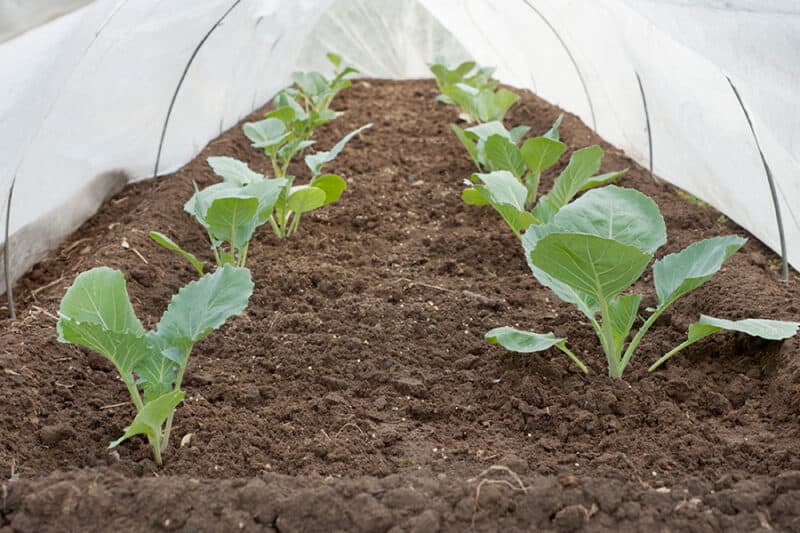
When Should I Hand Pollinate My Plants?
Here are some signs that hand pollination is a good idea for your plants.
- You never see bees or other insects hovering around your plants.
- You’re growing plants indoors, in a screened porch, or inside of a greenhouse.
- The fruit on your plants shrivel and die before maturing.
- You want to prevent cross-pollination between similar plants, especially if you plan to save seeds from your garden.
- You want to increase your chances of successful pollination and increase your harvest.
- You’re using row covers on your plants during their blossoming time.
Many gardeners use manual pollination to increase the likelihood of pollinating their plants, especially if they worry that bees might be lacking in their area.
Zucchini plants, for instance, usually send out male flowers before the female flowers emerge. No big deal if the males are out and fruit hasn’t formed, yet. But if the male flowers drop before the female flowers pop up, you need to get the pollinating tools out.
Many pumpkin growers hand pollinate all of their plants to be safe.
You can do the same thing in your garden to be sure you maximize your harvest.
Note that if your fruits have already failed to form or your harvest is particularly sad-looking and the blossoms are already spent, it’s too late to hand pollinate this year.
Some plants, like zucchini, may send up another round of blossoms if they fail to pollinate. Other plants won’t. If that’s the case, be prepared to do it next year when the blooms start up again.
Self-Pollinating vs. Cross-Pollinating
In general, you will have either self-pollinating or cross-pollinating plants in your garden.
Self-pollinating means just what you might think – the plant pollinates by itself. What this really means is that each plant has all of the sexual parts it needs to make a fruit. Each blossom is equipped to become a fruit once it is self-pollinated.
Usually, a bit of wind or a visitor from a pollinator is all it needs. If your garden is sheltered from the wind or you have a low number of pollinators in your area, these plants might need a bit of help.
Examples of self-pollinating plants are tomatoes and peppers.
Cross-pollinated plants need to be pollinated from another plant or variety, Apple trees, for instance, need a second apple tree to pollinate with. That means a pollinator must carry the pollen from one tree to the next.
Other plants have both male and female flowers on one plant. Many vining crops, like zucchini and melons, have both male and female flowers.
This means that the pollen located on the male flower’s stamen needs to be transferred to the female flower. You can tell it’s a female flower because it will have a bulb-shape at the of the blossom rather than just a long stem.
Plants That Might Need Hand Pollination
Not all plants need hand pollinating help. Here are some plants that might need a lending hand from you.
- Eggplants
- Tomatoes
- Peppers
- Cucumbers
- Beans
- Peas
- Strawberries
- Melons
- Zucchini
- All winter squash varieties
- Pumpkins
Do I Need Supplies for Hand Pollinating?
Yes, you do, but the things you need are items you probably already have available in your home.
- A small paintbrush or cotton-tip swabs
- Rubbing alcohol
Seriously – that’s it! And if you don’t have that, you can always use a stick or the plants themselves.
Rubbing alcohol is only necessary if you want to pollinate different varieties of plants. If you’re pollinating a zucchini plant with a paintbrush, you need to thoroughly clean off the brush before moving to another squash variety.
Unless you purposefully want to cross-pollinate varieties and not grow the varieties you purchased, keep the brushes clean in between plant varieties, or use a new cotton swab for each plant.
Understand the Parts of the Plant
Before you try hand pollinating, be sure that you understand each part of the flower. You need to know those parts to do the job properly.
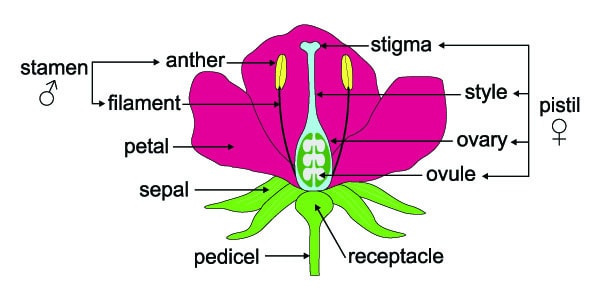
- Stamen: The stamen looks like a small antenna, and this is the part that holds the pollen. The stamen is located on male flowers.
- Pistil: This part is the long piece at the center of a female flower. It consists of the style, ovary, and stigma.
- Stigma: The stigma is located on the top of the pistil in the center of the flower. This is the part that receives the pollen from the male flower.
- Ovule: This can be found at the base of the pistil, and this is the part of the plant that is going to become the fruit afterward.
Hand Pollinating Self-Pollinating Plants
Self-pollinating plants are the easiest to hand pollinate. Typically, you’re just making sure the pollen gets down into the middle part of the flower.
All you need to do is gently use your brush and place it inside of each flower on the plant. Doing so moves the pollen down into the pistil, which is the middle part of the flower.
Self-pollinating plants need help much less often than cross-pollinating plants.
Hand Pollinating Cross-Pollinating Plants
For cross-pollinating plants, you really get to act like a pollinator! It’s best to hand pollinate in the morning because the blooms are more open then.
That said, note that you should only remove row covers to hand pollinate when the pests you’re trying to avoid are least active. For instance, squash vine borers are active in the morning, so pollinate in the afternoon.
Take your cotton swab or paintbrush and find a male flower on your plant. Male flowers have long stems at the base of the blossoms rather than bulbs. Put your brush inside of the flower and remove some pollen from the stamen, which is right in the middle of the blossom.
- A simple tip: if the flowers on your plant are far apart, put the pollen into an empty gelatin capsule. These capsules are clear, and you can fill them with herbs or powder, such as pollen. You don’t want to lose the pollen while moving between parts of the plant or across the garden!
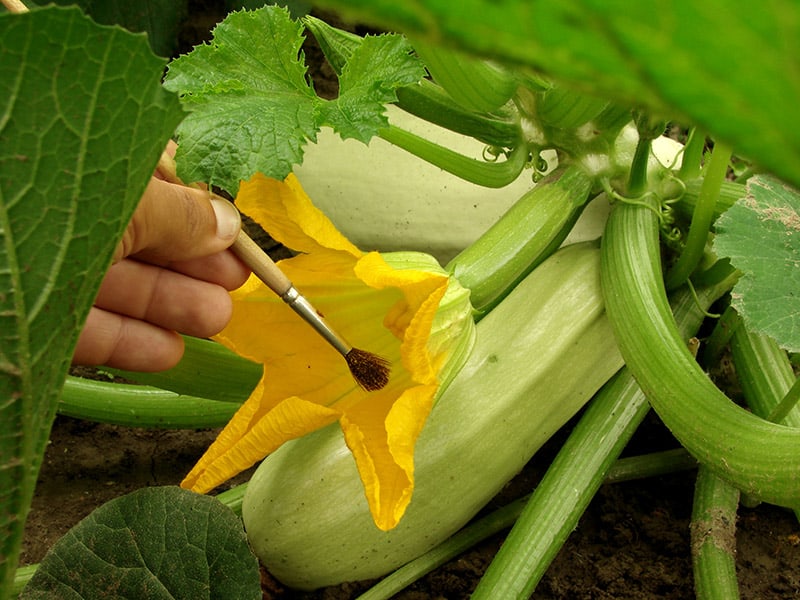
Now, find a female flower, which has bulbs or ovules at the bottom of the blossom rather than a stem. This will become the fruit after it’s pollinated. Take the pollen on your brush and transfer it to the pistil in the middle of the female flower.
Another option is to remove the male flower from the plant entirely and rub the flowers together or shake pollen into the female flower.
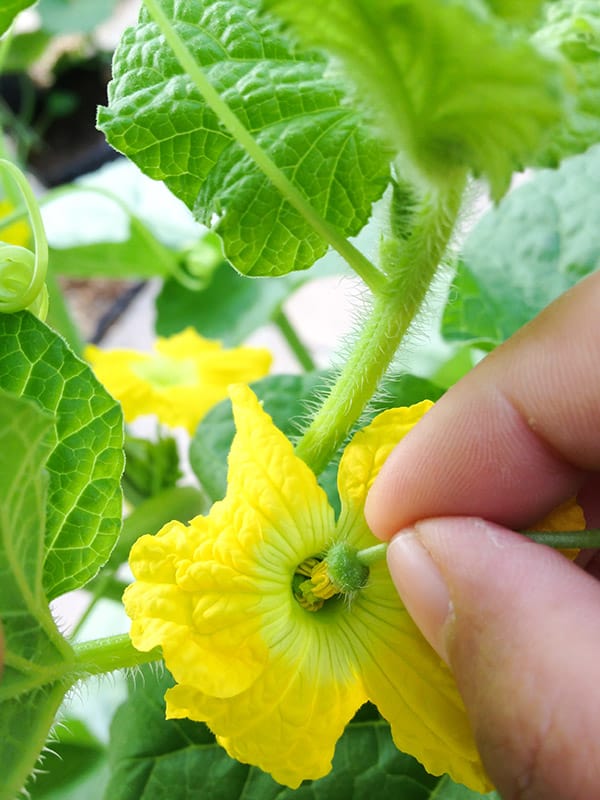
If you’ve plucked the male flowers to do this, don’t forget that squash blossoms are edible! You can fry them up for a unique and yummy snack.
All gardeners should learn how to hand-pollinate plants in your gardens. This simple technique can help increase your harvest and end the dropping of blossoms without flowers.
